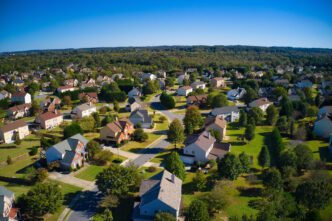As 2025 approaches, the housing market in Florida is on the brink of notable transformations, presenting both challenges and opportunities for buyers, sellers, and investors alike. A comprehensive understanding of the emerging trends will be crucial for stakeholders aiming to navigate this shifting landscape effectively.
Mortgage Market Dynamics
One of the most significant factors influencing the housing market in 2025 will be the anticipated gradual improvement of mortgage rates. While this is a positive development for potential buyers, the reality is that high mortgage rates and elevated home prices are likely to continue. Buyers should brace themselves for increased costs associated with home purchases, which might dampen the allure of the market relative to previous years. However, a key takeaway for prospective buyers is that the market is expected to be less competitive, providing greater opportunities for negotiation and selection than in recent years when demand often outstripped supply.
Regional Variations and Trends
South Florida
South Florida presents a unique contradiction in its housing landscape. Despite a rise in prices for both condos and single-family homes since last November, the number of transactions has seen a decline. This dichotomy is largely fueled by affluent buyers seeking high-end properties, which skews the pricing dynamics upward while making budget-friendly options more elusive. Increased inventory in this region could create a window for buyers with specific needs; however, those looking for more affordable housing options may need to adopt a patient approach.
In an interesting development, the Miami Brickell Financial District has emerged as a focal point for significant commercial real estate activity. The area’s infrastructure is being heavily invested in, driven by companies relocating to South Florida, thus enhancing the demand for high-quality office spaces. Conversely, the suburban market is experiencing a downturn, with properties trading at lower prices due to the persistent pressure of higher interest rates, affecting affordability and accessibility for many potential buyers.
Central Florida: A Balanced Market
For the first time in over a decade, Central Florida’s housing market has reached a state of equilibrium, according to the Orlando Regional Realtor Association (ORRA). This shift has brought much-needed stability, as highlighted by ORRA President Rose Kemp. The balance signifies a departure from the frenzied buying conditions of the pandemic era, allowing buyers to make more reasoned and deliberate decisions without the pressures of an overly competitive marketplace.
Northeast Florida Trends
Meanwhile, Northeast Florida is witnessing a steady appreciation in median home prices, which increased by 0.5% in November alone, continuing an upward trend over the last four months. However, this rise comes with an increase in available inventory, leading to a decline in sales volumes, particularly in Duval and St. Johns counties. This trend highlights a nuanced market where price increases are not necessarily indicative of robust demand.
Insurance Challenges Post-Hurricane Ian
One of the lingering issues affecting the market is the fallout from Hurricane Ian, which has instigated numerous litigations regarding property damage. The critical distinction between wind and water damage has become a focal point in determining policyholder compensation, especially in areas severely impacted by the storm. This ongoing litigation underscores the complexities faced by homeowners and insurers alike, creating an environment of uncertainty that could influence the broader housing market.
Experts predict that the same legal challenges that arose following previous natural disasters may be brought forth after the recent damage to Helene and Milton. The areas, often vulnerable to severe weather events, have experienced significant destruction, and the consequences for property owners may be profound.
Persisting Issues of Affordability
Amidst these shifts, housing affordability remains a pressing concern. In Central Florida, new affordable housing initiatives are gaining traction, benefiting from nearly $2.8 million in funding from a larger grant. These projects are crucial as they aim to provide essential housing options across various regions, addressing the needs of lower-income families in the face of rising costs.
Noteworthy Transactions and Legal Developments
Highlighting the continuous momentum within the real estate sector are significant transactions, such as PGA Tour Inc.’s recent sale of office buildings and land in Ponte Vedra Beach for an impressive $94.07 million. Additionally, the consequences of a major Medicare fraud scandal in South Florida have resulted in real estate ramifications, with properties tied to the fraud being auctioned off amid broader efforts to reclaim assets.
Coconut Grove Auction Incident
An unusual but telling incident occurred in Coconut Grove, where nine out of twelve townhouses previously marred by a real estate scam were sold at a discount during a Zoom auction. This event illustrates the potential for market opportunities to arise from troubled histories, creating unique avenues for buyers willing to navigate complex circumstances.
All in All
As the housing market in Florida prepares for 2025, stakeholders must be aware of the intricate web of ongoing trends and regional variations. From shifts in mortgage rates and regional market dynamics to legislative challenges and innovative efforts to provide affordable housing, potential buyers and investors will need to remain vigilant and informed. Understanding these developments will empower them to make strategic decisions in a landscape that promises both challenges and opportunities for the discerning participant.








